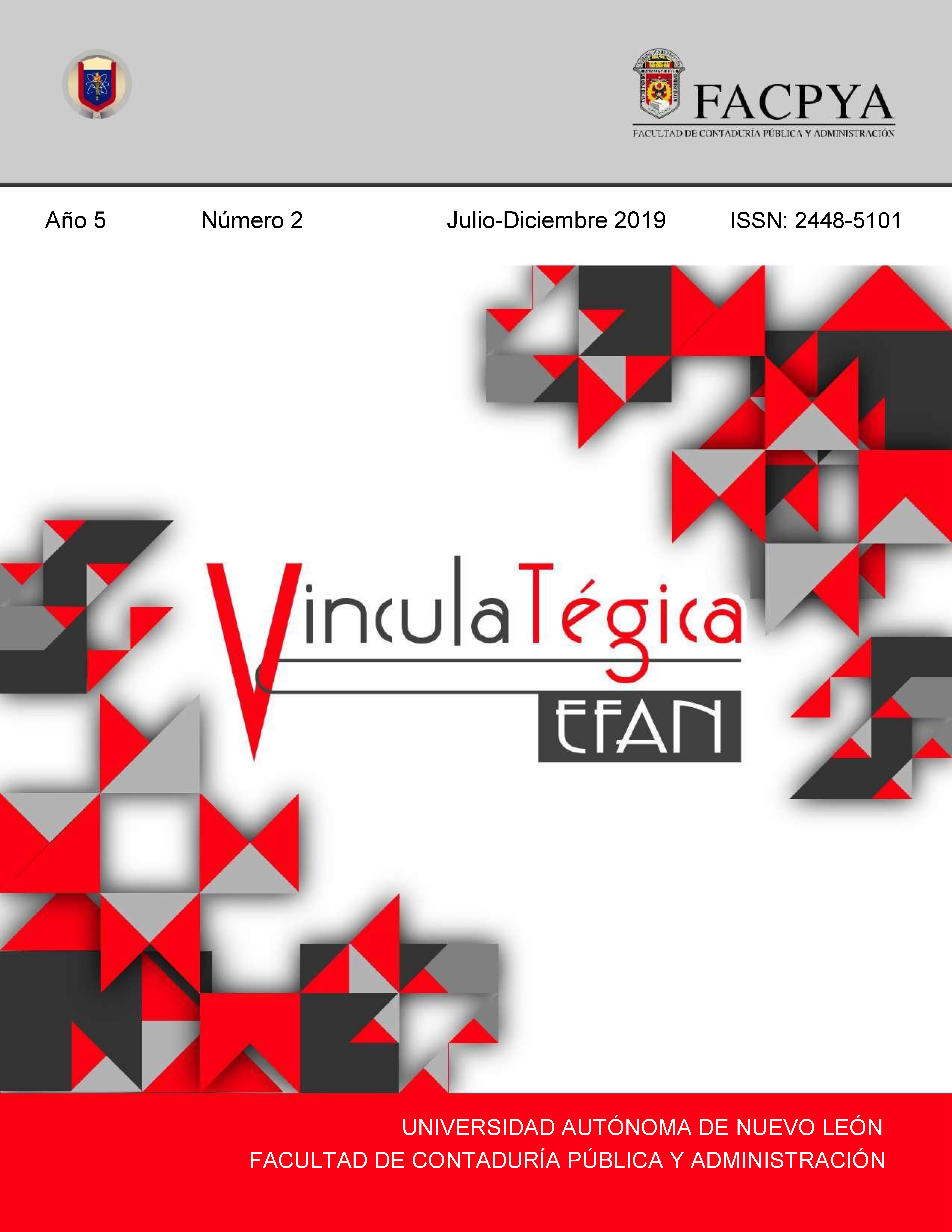Impacto de la información contable en la supervivencia de la micro empresa familiar en Ecuador
DOI:
https://doi.org/10.29105/vtga5.2-756Keywords:
pequeña empresa, gestión, presupuesto, contabilidad, ciclo de vidaAbstract
This study characterizes the impact that accounting information has on the survival of the family microenterprise in Ecuador. For this, a structured survey valued on a symmetric Likert scale equidistant from five points was applied, applied to 372 micro-businesses of the urban parishes Tarqui, Ximena and Febres Cordero, which make up the second most important city in the country. With the collected data, a multivariate regression model was used, which served to explain how the characteristics of the independent variable (making decisions with shortterm plans, with a budget, with some type of accounting information, and considering the profile of the owner) influence survival. The results of the model indicate that most businesses agree that the variables of the accounting information contribute significantly to the survival of family microenterprises, to overcome the first stage of the organizational life cycle.
Downloads
References
Adizes, I. (1979). Organizational passages-diagnosing and treating lifecycle problems of organizations. Organizational Dynamics. 8(1), 3–25. doi.org/10.1016/00902616(79)90001-9 DOI: https://doi.org/10.1016/0090-2616(79)90001-9
Arcilla, M., Calvo-Manzano, J. A., y Cerrada, J. A. (2012). El catálogo de servicios como base para la gestión financiera en las medianas, pequeñas y micro empresas: aproximación práctica mediante una biblioteca de activos de proceso. Computer Science and Engineering. 2(4), 259–264. doi.org/10.5923/j.computer.20120001.05 DOI: https://doi.org/10.5923/j.computer.20120001.05
Arias Sandoval, A., y Quiroga Marín, R. F. (2008). Cese de actividades de las PyMEs en el área metropolitana de Cali (2000-2004): un análisis de supervivencia empresarial. Cuaderno de Administración. 21(35), 249–277.
Asamblea Nacional, (2017). Ley Orgánica para la reactivación de la economía, fortalecimiento de la dolarización y modernización de la gestión financiera. Ecuador: Segundo suplemento - Registro Oficial. Pub. L. No. 150, 1.
Baker, D. D., y Cullen, J. B. (1993). Administrative reorganization and configurational context: the contingent effects of age, size, and change in size. Academy of Management Journal. 36(6), 1251–1277. doi.org/10.2307/256811 DOI: https://doi.org/10.5465/256811
Block, J. H., Fisch, C. O., Lau, J., Obschonka, M., y Presse, A. (2016). Who prefers working in family firms? An exploratory study of individuals’ organizational preferences across 40 countries. Journal of Family Business Strategy. 7(2), 1–25. doi.org/10.1016/j.jfbs.2016.04.001 DOI: https://doi.org/10.1016/j.jfbs.2016.04.001
Casas, R. (2012). Aprendizaje e innovación en micro empresas rurales: reseñas bibliográficas. Revista de Ciencias Sociales. 25(77), 229–232.
Charbel, S., Elie, B., y Georges, S. (2013). Impact of family involvement in ownership management and direction on financial performance of the Lebanese firms. International Strategic Management Review. 1(1–2), 30–41. doi.org/10.1016/j.ism.2013.08.003 DOI: https://doi.org/10.1016/j.ism.2013.08.003
Colli, A., y Larsson, M. (2013). Family business and business history: an example of comparative research. Business History. 56(1), 37–53. doi.org/10.1080/00076791.2013.818417 DOI: https://doi.org/10.1080/00076791.2013.818417
Dyer, W. G. J., y Sánchez, M. (1998). Current state of family business theory and practice as reflected in Family Business Review 1988-1997. Family Business Review. XI(4), 287–295. doi.org/10.1111/j.1741-6248.1998.00287.x DOI: https://doi.org/10.1111/j.1741-6248.1998.00287.x
Gobierno del Ecuador. (2010). Registro Oficial N°335 del Martes 07 de diciembre.
Hair, J. F., Hult, G. T. M., Ringle, C. M., y Sarstedt, M. (2014). A primer on partial least squares structural equation modeling (PLS-SEM). (1ra. Ed). Estados Unidos: I.SAGE Publications.
Hall, M. (2010). Accounting information and managerial work. Accounting, Organizations and Society. 35(3), 301–315. doi.org/10.1016/j.aos.2009.09.003 DOI: https://doi.org/10.1016/j.aos.2009.09.003
Hopwood, A. G. (1972). An empirical study of the role of accounting data in performance evaluation. Journal of Accounting Research. 10(3), 156–182. doi.org/10.2307/2489870 DOI: https://doi.org/10.2307/2489870
INEC. (2017). Proyección de población 2010-2020. Quito, Ecuador.
INEC. (2018). Directorio de empresas y establecimientos, DIEE 2017. Quito, Ecuador.
INEGI. (2015). Esperanza de vida de los negocios. Aguas Calientes, México: Boletín de prensa N°087/15.
Lippitt, G. L., y Schmidt, W. H. (1967). Crisis in developing organization. Harvard Business Review. 45(6), 102–112. 1462
Miller, D., y Friesen, P. H. (1983). Successful and unsuccessful phases of the corporate life cycle. Organization Studies. 4(4), 339–356. doi.org/10.1177/017084068300400403 DOI: https://doi.org/10.1177/017084068300400403
Persson, H. (2004). The survival and growth of new establishments in Sweden, 1987-1995. Small Business Economics. 23(5), 423–440. doi.org/10.1007/s11187-004-3992-7 DOI: https://doi.org/10.1007/s11187-004-3992-7
Quinn, R. E., y Cameron, K. (1983). Organizational life cycles and shifting criteria of effectiveness: some preliminary evidence. Management Science. 29(1), 33–51. doi.org/10.1287/mnsc.29.1.33 DOI: https://doi.org/10.1287/mnsc.29.1.33
Segarra, A., y Callejón, M. (2002). New firms’ survival and market turbulence: new evidence from Spain. Review of Industrial Organization. 20(1), 1–14. doi.org/10.1023/A:1013309928700 DOI: https://doi.org/10.1023/A:1013309928700
Smith, K. G., Mitchell, T. R., y Summer, C. E. (1985). Top level management priorities in different stages of the organizational life cycle. The Academy of Management Journal. 28(4), 799820. doi.org/10.2307/256238 DOI: https://doi.org/10.2307/256238
Tam, S., y Gray, D. E. (2015). Organisational learning and the organisational life cycle: the differential aspects of an integrated relationship in SMEs. European Journal of Training and Development. 40(1), 2–20. DOI: https://doi.org/10.1108/EJTD-07-2015-0052
Tàpies, J. (2011). Empresa familiar: un enfoque multidisciplinar. Universia Business Review. (32), 12–25.
Ward, J. L. (1988). The special role of strategic planning for family businesses. Family Business Review. 1(2), 105–117. doi.org/10.1111/j.1741-6248.1988.00105.x DOI: https://doi.org/10.1111/j.1741-6248.1988.00105.x
Downloads
Published
How to Cite
Issue
Section
License

This work is licensed under a Creative Commons Attribution 4.0 International License.
a). Authors keep copyright and give the journal the right of the first publication of the work under a Creative Commons attribution license. This license allows others to share the work as long as original authorship and initial publication in this journal is acknowledged.
b). Authors may make other independent and additional contractual agreements for the non-exclusive distribution of the version of the article published in this journal (e.g., include it in an institutional repository or publish it in a book) as long as they clearly indicate that the work was published for the first time in this journal.







